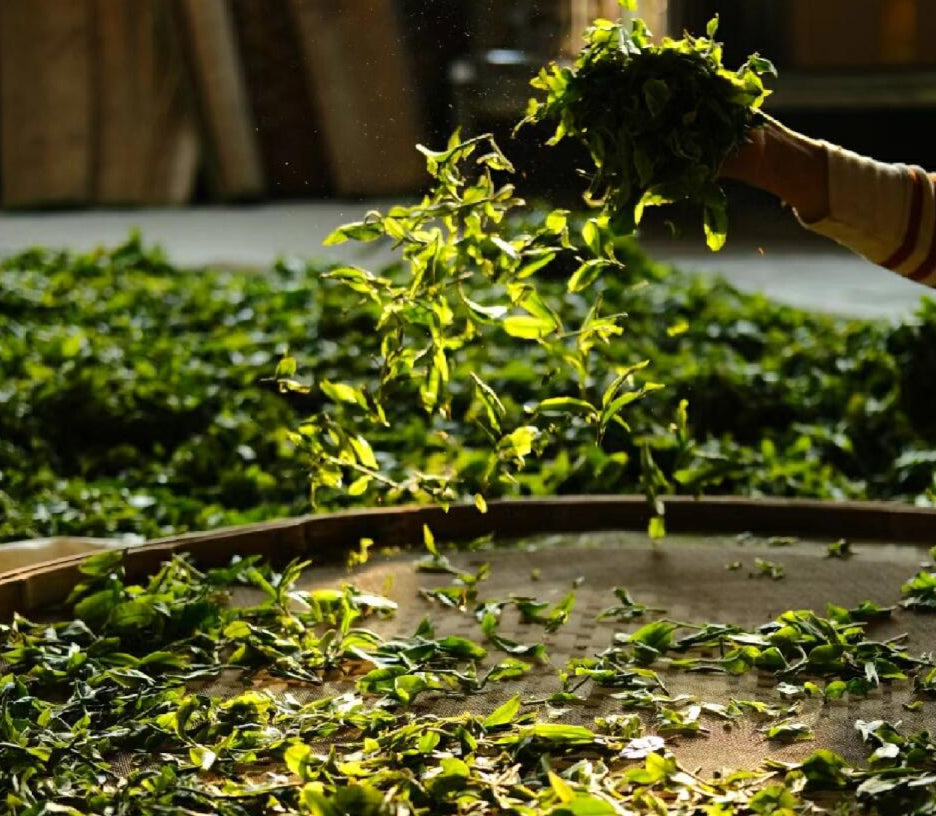
Why Oolong Tea Might Be the Most Fascinating Tea You’ll Ever Taste
If you’ve only tried green or black tea, you’re missing out on the most aromatic, complex, and endlessly surprising tea category in China: Oolong.
With its floral aroma, deep flavors, and almost meditative brewing process, oolong isn’t just a tea—it’s an experience. Whether you're new to Chinese tea or a curious tea drinker looking to expand your palate, oolong offers a unique entry into the rich world of traditional Chinese craftsmanship.
🌱 What Is Oolong Tea, and Why Is It So Unique?
Oolong is one of the six major types of Chinese tea, sitting beautifully between green and black tea in terms of oxidation. But it's not just a halfway point—it’s a universe of its own.
Unlike green or black tea, oolong can range from light and floral to dark and roasted, all depending on how it's processed. The key step that defines oolong is called “Yao Qing”(摇青), or tossing the leaves during oxidation to bring out incredible complexity in aroma and taste.

📍 Four Main Styles, Four Unique Origins
Oolong is not just one tea—it’s a category that spans across different regions and styles, each with their own signature flavor and culture:
-
Wuyi Rock Tea (Fujian, North)
Bold, mineral-rich teas grown in rocky cliffs—like Da Hong Pao and Rou Gui. -
Tieguanyin (Fujian, South)
Smooth, buttery, and floral. One of the most beloved oolongs for its clean taste. -
Phoenix Dancong (Guangdong)
Highly fragrant, often fruity or honey-like—like the famously named “Duck Shit Aroma.” -
Taiwanese Oolong
Grown at high altitudes with crisp, sweet aromas—Dong Ding and Lishan are top picks.
Each style offers something different. You’re not just drinking tea—you’re tasting terroir, tradition, and technique.
🌼 Aroma First, Flavor Second
If you’ve ever opened a bag of oolong and thought “Wow, what is that amazing smell?”—you’re not alone. Oolong is often considered the most fragrant category of Chinese tea, with natural notes of orchid, peach, roasted nuts, and even cream.
For beginners, this is often the hook: the scent is so captivating that you want to take a sip immediately. Then, the taste unfolds—often smooth, deep, and multi-layered.
🍵 How to Brew Oolong the Right Way
To get the most out of oolong, a little intention goes a long way. Here are the essentials:
-
Use boiling water (100°C / 212°F) – Unlike green tea, oolong loves the heat.
-
Use more leaves than you’d expect – 6–8 grams for a small 110–150ml teapot or gaiwan.
-
Keep water and leaves separate between infusions – This preserves flavor and balance.
-
Use the right tools – A small teapot or gaiwan brings out oolong’s best qualities.
Pro tip: Oolong’s flavors develop over multiple brews, so don’t stop at just one.
🏔️ What Is “Yun”—And Why Tea Lovers Chase It
Ever heard of “Yan Yun,” “Shan Yun,” or “Guan Yin Yun”? These poetic terms refer to the “aftertaste magic” that lingers long after you sip—a subtle echo of the tea’s origin.
This effect often comes from teas grown in high-altitude or mineral-rich areas, where soil and climate create a distinctive character. In Chinese tea culture, this "yun" is a prized sensation that even seasoned tea drinkers chase for decades.
🌸 Where Should Beginners Start?
If you’re new to oolong, start with a light and floral option. It’s easier to appreciate and less likely to overwhelm your palate.
Here are a few beginner-friendly picks:
-
Fragrant Tieguanyin or Milk Oolong
-
Taiwanese high mountain oolongs like Dong Ding or Lishan
You can always explore deeper, stronger flavors as your taste evolves.
🎯 Final Thoughts: A Tea You Can Grow With
Oolong tea is not just something you drink—it’s something you explore. With so many variables—region, cultivar, processing—it becomes a lifelong journey.
Many oolong fans say, “Once you start with oolong, you can’t go back.”
And we get it. There’s always another layer to discover.
🛍️ Want to Try Oolong for Yourself?
Explore our curated oolong tea collection—sourced directly from the mountains of Fujian, Guangdong, and Taiwan. Whether you want something delicate and floral or bold and roasted, we’ve got you covered.
👉 [Shop Oolong Teas Now]
📩 Have questions? Drop us a message—we love tea talk!If you would like to receive the Tea 101 manual, please subscribe to our emails. And there are one-on-one tea experts serving you regarding tea information.
